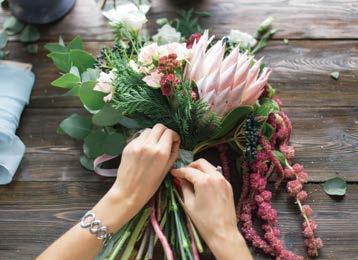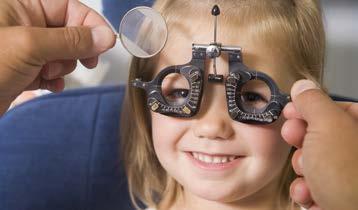
7 minute read
CORONAVIRUS
natural pet It is unlikely a pet will become infected and serve as a source of infection for people.
CORONAVIRUS PET SAFETY Facts and Tips for Dog and Cat Owners
Advertisement
There are many types of coronavirus. COVID-19 is new—a novel coronavirus—and there are currently no confirmed cases of COVID-19 in dogs or cats. Dogs can become infected with a canine coronavirus. It is fairly species-specific and will not infect people, but can infect cats (without causing clinical disease in naturally infected cats). Most infected dogs do not show symptoms and recover without showing signs of infection; young puppies may exhibit mild diarrhea.
Cats have their own coronavirus that, like dogs, usually causes an asymptomatic infection, or may cause mild diarrhea or mild respiratory infection (especially in kittens). However, this coronavirus, for unknown reasons, can mutate in the GI tract and transform into the (usually) lethal feline infectious peritonitis (FIP) virus (this occurs in about 10 percent of infected cats).
Again, this feline coronavirus will not infect dogs or people, and only infects felids. (A curious note is that cats can become by Shawn Messonnier
infected with the human SARS coronavirus experimentally and naturally, but do not become ill, and the original SARS virus was suspected to have originated from a mongoose.) As with human coronaviruses, canine and feline coronaviruses can survive outside of the pet’s body for a period of time, especially in a colder environment, but are easily killed with most soap or disinfectants.
Dogs and cats that develop their own coronaviral diseases will not infect people. However, by serving as fomites (objects that can carry an infectious organism on the surface), dogs and cats could potentially carry a virus on their coat or skin if an infected family member gets infected material (saliva, respiratory droplets, etc.) onto the animal. Like any other surface in the home, the virus could transfer from the surface of the pet to other uninfected family members. (This is usually by hand to face transfer.)
To be safe, it may be wise to keep the family pet away from the infected family member, or at least have the infected family member bathe and/or wipe the pet’s coat with a wet washcloth before the pet is exposed to uninfected family members.
Keep in mind that maintaining proper blood levels of vitamin D in people and in pets is important in minimizing infectious diseases.
Shawn Messonnier, DVM, is the owner of Paws & Claws Holistic Animal Hospital, in Plano, Texas, and an award-winning author and host on Martha Stewart Radio.




I find hope in the darkest of days and focus in the brightest. I do not judge the universe. ~Dalai Lama

FLOWER WOW-ER Beautiful Floral Designing by April Thompson green living tant in floral arranging. We can opt for a fussy, formal style, a rustic farmhouse look or a modern, asymmetrical design. “The good news is you can’t mess up flowers. Whether multidimensional or one-sided, monochromatic or multicolored, you really can’t go wrong,” says Kathy Jentz, publisher of Washington Gardener Magazine and a flower arranging instructor in Silver Spring, Maryland.
Like a good meal, the ingredients of a bouquet are as important as how they are assembled. Start with organic, pesticidefree buds. “Look for local, seasonal flowers, which will be fresher and last longer than those flown in,” says Betty Ann Galway, a certified floral designer and instructor at the Norfolk Botanical Garden, in Virginia. Farmers’ markets, community supported agriculture CSAs and pick-your-own farms are all great places to find locally, sustainably grown flowers, according to Jentz. To select for long shelf life, look for fresh-looking stamens and foliage, and firm heads on flowers. Mums, carnations and asters will last up to three weeks, says Galway.
When selecting flowers, Ami Wilber, floral and event décor designer at the Washington, D.C., Hillwood Estate, Museum & Gardens, recommends starting with a color scheme, whether limiting the palette to one or two colors, using analogous colors like F resh-cut flowers can elevate a space with color, scents and textures that draw the eye and nose, but professional floral designs can be pricey. DIY arranging, however, is an easy, fun and inexpensive creative outlet that can also help cultivate mindfulness. Flower arranging is more than just a decorative art; it’s a spiritual activity that helps create a kinship with nature and merge the indoors and outdoors.
Ikebana, the Japanese art of flower arranging, dates back to the seventh century, when floral offerings were made at Buddhist altars, according to Jeanne Ha, owner of the Washington Flower School, in Takoma Park, Maryland. In the 16th century, Japanese samurais practiced flower arranging prior to combat to help calm them and stay centered, a stress-reducing activity most of us can benefit from today. “Seasonal flowers are an important element of Ikebana,” says Ha, part of a longstanding Japanese tradition of appreciating plants and flowers throughout the four seasons.
Finding a Floral Style
As with any artistic medium, creative choices are imporThe good news is you can’t mess up flowers. ~Kathy Jentz Flower Arranging Tips From a Pro A healthy, professional-looking bouquet doesn’t take years of flower designing to achieve; these tricks of the trade will help neophyte designers get started.
To loosen up tightly wound buds, breathe on them. Hot breath will open buds up faster, says publisher and arranger Kathy Jentz.
An arranging technique Jentz recommends is clustering blossoms between the index finger and thumb of the less-dominant hand, resulting in a tight arrangement that can be held in place by a rubber band pulled up to the tops of the stems.
If working with hydrangeas or other flowers with woody stems, smash open the stems along the length to get more water circulation.
Consider upcycling common containers to make flower vases, Jentz says. “You can create recycled vases out of old jars and bottles, or use chalk paint to colorfully cover over a tin can.”
The secret sauce in flower food is simply sugar and citric acid, says Jentz, so a little lemonade mix added to the water of an arrangement will work fine in a pinch.

pinks and purples or selecting complementary colors like blues and oranges. “It’s also good to find a focal flower or a show-stopper that will immediately draw attention to a bouquet,” says Wilber.
Prepping the flowers before arranging will also prolong an arrangement’s longevity, including cutting stems diagonally to provide more surface area for water, suggests Jentz. She also recommends plunging flowers into cool water immediately after trimming their stems. Leaves pump water up the stem, so leave a few on while clearing those from the bottom that would otherwise be submerged in water, adds Galway.
There are many ways to create structure for an arrangement, most of which is often hidden. Wilber stuffs chicken wire into an opaque container and then tapes down the top with a grid of floral tape to provide more control over the direction of the stems. Ha uses floral foam, soaked to provide hydration, into which stems can be inserted at any angle to create a gravity-defying design.
Different styles of arranging draw from different principles, but many common rules of thumb apply; for example, using odd numbers of each type of flower and adding in the largest flowers first to create an anchor for the composition. For a rustic, farm-totable bouquet, look beyond just blooms to incorporate seed pods, grasses and other foliage from the backyard or woods, says Wilber. These will not only fill in gaps left by thin-stemmed flowers, but also help create contrast in texture, she adds, recommending that 70 percent of the container be green.
Once the design is complete, finetune the arrangement by stepping back to see the big-picture look and making any adjustments, removing discolored leaves and adding greenery to any bald spots, says Wilber. Many designers wrap large, flat leaves around the inside of a container for a clean, polished look that hides the stems.
Most importantly, don’t forget to stop and smell the lilacs. Let the flowers lead the design and let go of any unattainable vision of perfection. “Appreciating the flowers and being thankful is an important part of the process, too,” says Ha.
Inspired Lifestyle Travel plus: Brain Health

Readers are Seeking These Providers & Services: Transformative Travel Companies Natural Habitat Adventures Self-Discovery Vacations • Personal Growth Retreats Adventure Tour Groups • Travel Outfitters Neurologists • Functional Medicine ... and this is just a partial list!
THE FOOD CONNECTION ISSUE
Beyond Factory Farming plus: Gut Health JULY
Biological Dentistry
plus: Environmental Education AUGUST
CONNECT WITH OUR READERS
THREE-MONTH EDITORIAL CALENDAR & MARKETING PLANNER
Contact us to learn about marketing opportunities and become a member of the Natural Awakenings community at: 386-736-3838








